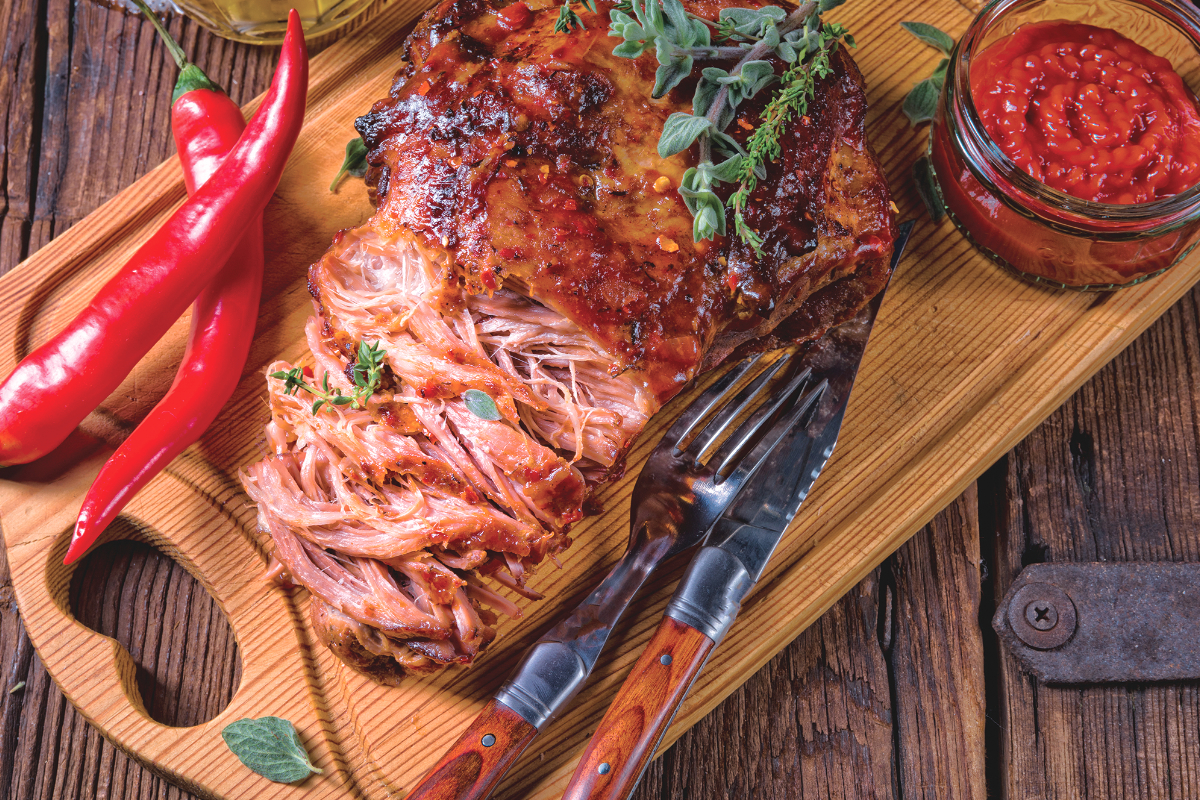KANSAS CITY — Food formulators wishing to improve the quality of soups and sauces, or perhaps move to a cleaner label, should know about recent innovations in starches containing rice, potatoes or tapioca.
Beneo, Inc., Parsippany, N.J., has developed a thermal inhibition process that strengthens native rice starch granules to enhance their functional properties. The company launched Remypure S52 rice starch in July at IFT18, the Institute of Food Technologists’ annual meeting and expo in Chicago.
“The results deliver an ingredient comparable or superior to chemically modified food starches without the use of chemicals,” Beneo said. “Food starches are generally used as thickeners in food such as soups, sauces and ready-to-eat meals to create pleasant textures and excellent freeze/thaw stability.
“As these products require high performance under shear, acidity and heat, the challenge has been to maintain optimal functionality under conditions such as gentle pasteurization to more severe retorting in both neutral and acidic food matrices. Now Remypure S52, as a clean label texturizer, gives manufacturers options without the need for modified starches under conditions ranging from low pH, to high temperature and high shear.”
Sauces in frozen foods may need to survive multiple freeze/thaws, said Shiva Elayedath, senior technical services manager for Cargill, Minneapolis. Freeze/thaw may happen in transportation from the manufacturer to the store and then again from the store to the home of the consumer.
“Your sauce can go through a number of freeze/thaws, and sometimes what happens is, the sauce does not remain intact,” Mr. Elayedath said. “It breaks down.”
A blend of tapioca starch and potato starch allows the sauce to survive multiple freeze/thaws, he said. Cargill launched a line of potato starches under its SimPure brand this year.
“With dressings, sauces and spreads, it is vital to achieve the right balance of flowability, creaminess and smoothness, along with using the right ingredients that are compatible with the consumer/customer segment being targeted,” said Earl Christiansen, R.&D. applications scientist for Glanbia Nutritionals and based in Chicago.
Glanbia Nutritionals has ingredients from dairy sources as well as plant sources.
“As consumer demands move away from long chemical-sounding names in ingredient statements, they want to see ingredients they understand like milk, whey, pea, oat, flax, etc.,” he said.
Formulators will want ingredients that perform similar functions to mono- and diglycerides, carrageenan, monoester, etc., he said.
“Texture continues to be really important for consumers,” Mr. Elayedath said. “If you think about the consumer experience, when we talk about taste, texture doesn’t come to mind right away, but texture is a very significant piece of taste.
“It’s not just the flavor. Unless you have the texture right, you’re not going to get the holistic experience. It’s really critical in all products. If you think about soups, sauces and desserts, if you think about baked goods, everywhere texture is really important. Starches can play a big role in providing that end texture, the final experience for the consumer.”
---------------

Tate & Lyle creating texture design tools
Tate & Lyle, P.L.C., London, has invested in developing Texture-Vantage systems, which are a response to customer demands for more predictive tools informing products’ performance. Tate & Lyle is developing texture design tools to help take the guesswork out of formulation challenges.
The Texture-Vantage systems include:
- Texture maps that predict attributes such as mouth clearing, firmness, elasticity, cutability, cohesiveness and melt-away;
- Starch selection charts that Tate & Lyle developed by translating relationships between ingredients’ functionality, performance and application;
- WikiStarch, which is a proprietary encyclopedia that Tate & Lyle staff members use to solve formulation challenges. The encyclopedia includes topics such as starch functional properties, manufacturing, applications and regulations;
- Texture University, which includes webinars led by Tate & Lyle scientists who offer guidance on ingredient functionality and product design.
---------------

Solving texture issues when working with plant protein
Incorporating plant protein into products may result in texture issues. Meat alternatives, yogurt alternatives and plant-based beverages are all examples.
Meat alternatives need to have the indulgent mouthfeel found in meat items. Cargill this year launched a line of potato starches under the SimPure brand that offer texture benefits and a neutral flavor. SimPure 99500 potato starches offer water-binding capabilities in meat and meat alternatives.
TIC Gums, a business of Ingredion, Inc., has worked with plant protein yogurt alternatives and plant-based beverages.
“Simplistica ingredient systems are designed to work with a variety of alternative bases,” said Davis Luna, a food scientist with TIC Gums, White Marsh, Md. “For example, Simplistica YG 3206 utilizes a neutrally flavored faba bean protein along with tapioca flour and agar to add protein and enhance texture in plant-based yogurts. Many plant bases used in yogurt alternatives lack the protein content and recognizable texture consumers expect in a traditional dairy yogurt. The texture fortification and minimal flavor impact makes Simplistica YG 3206 a perfect stabilizer for these plant bases, such as coconut, almond or cashew.
Simplistica BV 1325 combines pea protein with acacia gum and gellan gum to create a base system for plant-based beverages, he added.
“The pea protein used has low impact on flavor and texture, even after being processed through UHT conditions,” Mr. Luna said. “The hydrocolloids in this system also help to provide emulsification and suspension without a significant impact on viscosity. This system gives formulators a head start when designing a plant-based beverage by bypassing the flavor, texture and processing challenges associated with using alternative proteins.”
Read again Reaching texture goals in soups and sauces | 2018-11-14 - Food Business News : https://ift.tt/2Eab3mIBagikan Berita Ini















0 Response to "Reaching texture goals in soups and sauces | 2018-11-14 - Food Business News"
Post a Comment